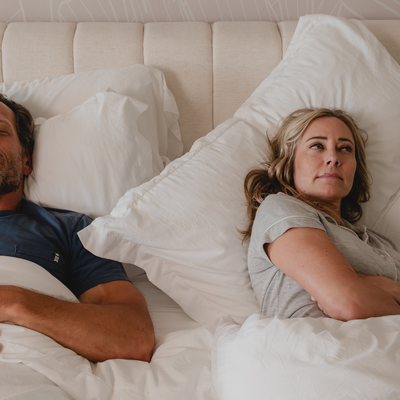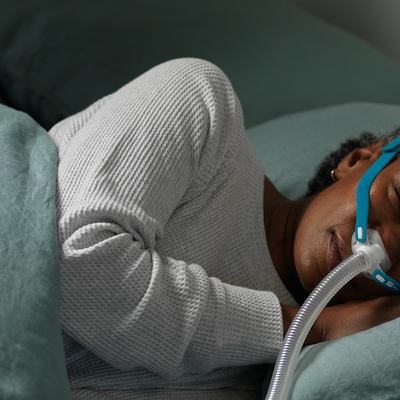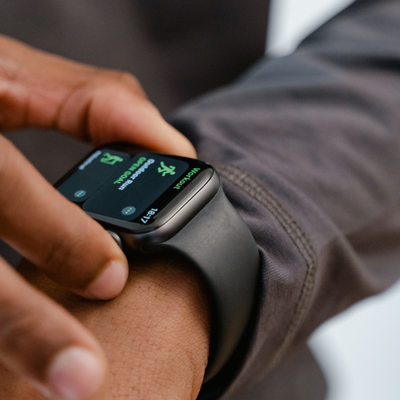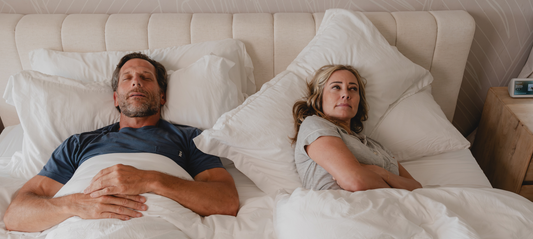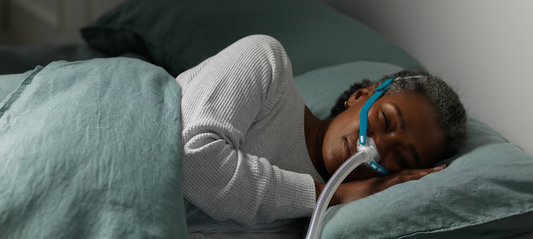Written by Scott Baylon
August 4, 2023
At Lofta, we consider the mask your MVP -- Most Valuable Part of Therapy. Choosing the right mask can make or break your therapy. One type of mask is called a nasal pillow style. They have gained popularity for their unique design and potential benefits. In this article, we will explore the effectiveness of CPAP nasal pillows, the differences between nasal mask and nasal pillow mask, the breathing process while using nasal pillows, and their expected lifespan.
Are CPAP Nasal Pillows Effective?
CPAP nasal pillows have proven to be effective for many individuals who require sleep apnea treatment. These small, soft inserts fit gently into the nostrils, delivering pressurized air to maintain an open airway during sleep. The effectiveness of nasal pillows lies in their ability to provide the required air pressure while minimizing discomfort and claustrophobia often associated with larger masks.

Pictured: The P10 by ResMed with the AirMini™
Nasal Pillows Available at Lofta:
Most Popular: AirFit™ P10 by ResMed
For Travel Device: AirFit™ P10 for AirMini™
Innovative Headgear: AirFit™ P30i by ResMed
Newly Designed: Brevida by Fisher & Paykel
But are they right for you? We think they're best for those who...
1. Experience Claustrophobia:
The minimalistic design of nasal pillows can alleviate feelings of claustrophobia that some CPAP users may experience with larger masks.
2. Prefer Minimal Contact:
Nasal pillows offer a reduced contact area on the face, allowing users to read or watch TV before sleep more comfortably.
3. Have Facial Hair:
Individuals with facial hair, which can interfere with the seal of a traditional mask, might find nasal pillows to be a better fit.
4. Require Higher Pressure:
The direct airflow from nasal pillows can be more effective at higher pressure settings.
Nasal Mask vs. Nasal Pillow Mask: Understanding the Difference

The primary distinction between a nasal mask and a nasal pillow mask lies in their design and the way they deliver pressurized air. A nasal mask covers the entire nose, forming a seal around it to deliver the air pressure. On the other hand, nasal pillows consist of small inserts that are placed directly into the nostrils.
The advantages of nasal pillows include:
Minimal Facial Contact:
Nasal pillows have a reduced facial contact area, which can be more comfortable for some users.
Unobstructed Vision:
The design of nasal pillows allows users to have an unobstructed field of vision, making activities like reading or watching TV more convenient. -
Less Bulk:
Nasal pillows are generally smaller and less bulky than nasal masks, making them an appealing option for those who feel overwhelmed by traditional masks.
Breathing with CPAP Nasal Pillows
Breathing with CPAP nasal pillows involves a straightforward process:
1. Insertion: Gently insert the soft nasal inserts into your nostrils, making sure they are positioned comfortably.
2. Strap Adjustment: Secure the headgear straps to ensure a snug fit. The straps should be tight enough to prevent air leakage but not so tight as to cause discomfort.
3. Switch On CPAP Machine: Turn on the CPAP machine and adjust the airflow to the prescribed pressure setting.
4. Breathe Normally: With the nasal pillows in place and the machine delivering pressurized air, breathe as you normally would. The positive air pressure keeps your airway open, preventing interruptions in breathing.
Lifespan of CPAP Nasal Pillows
The lifespan of CPAP nasal pillows can vary depending on factors such as usage, care, and quality of materials. On average, nasal pillows can last anywhere from 3 to 6 months before they need replacement. Regular cleaning is essential to prolong their lifespan and ensure hygienic usage. It's recommended to follow the manufacturer's guidelines for cleaning and replacement to maintain optimal therapy effectiveness.
Conclusion
CPAP nasal pillows offer an effective and comfortable solution for individuals seeking treatment for sleep apnea. Their unique design, minimal contact, and unobstructed vision make them a preferred choice for many users. Understanding the differences between nasal masks and nasal pillows, as well as the proper usage and maintenance, can contribute to a successful CPAP therapy journey. Always consult your healthcare provider or sleep specialist to determine the most suitable mask type for your individual needs.



